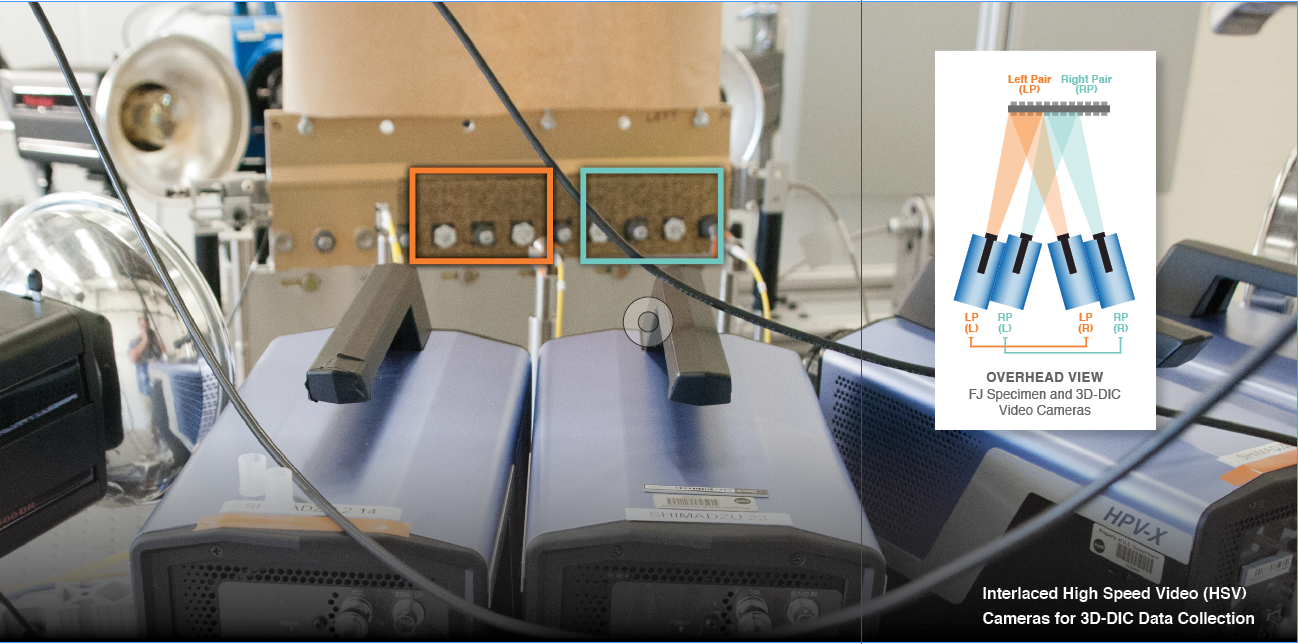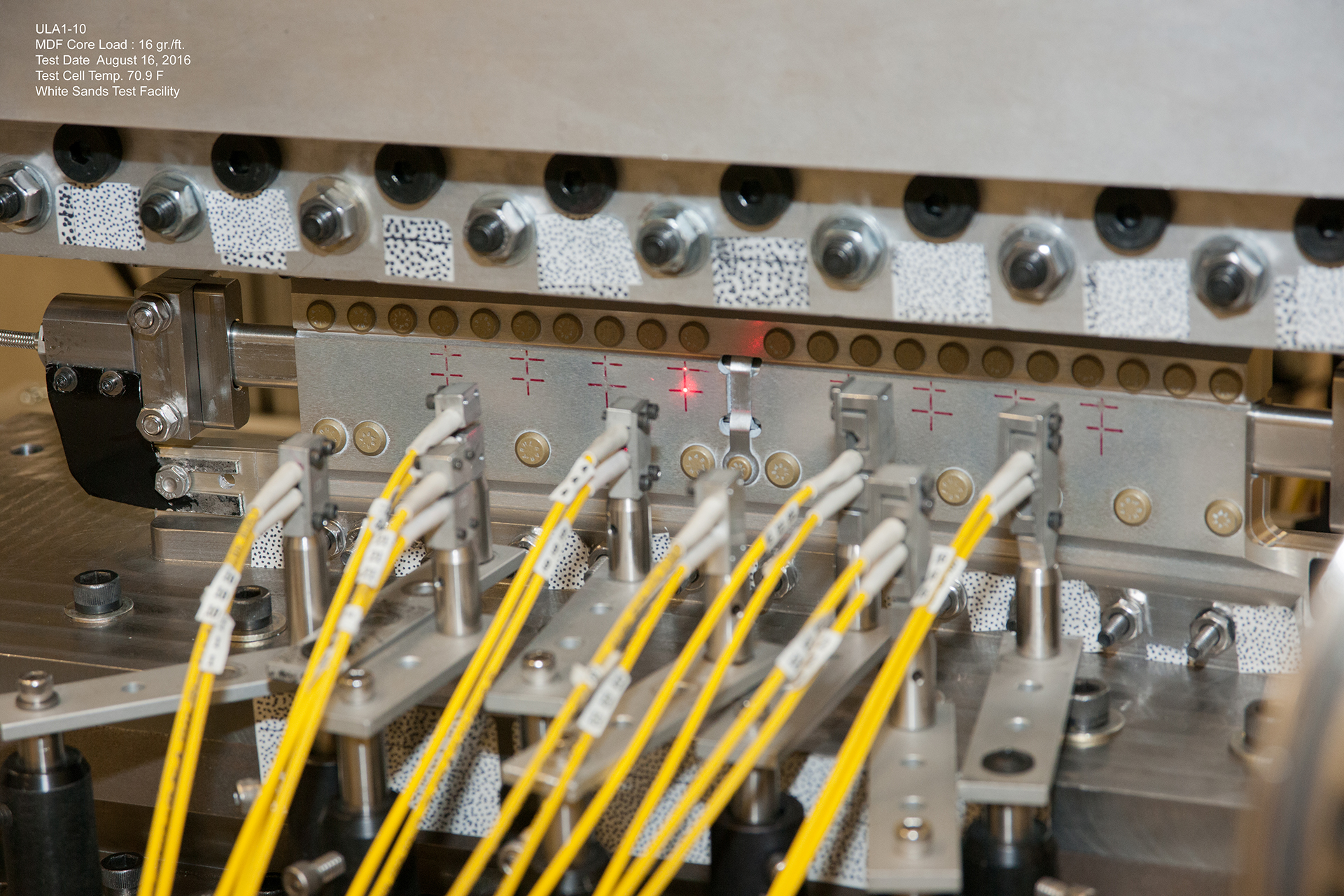Download PDF: High Speed Structural Measurement Technique Development and Validation
Frangible joints (FJ) are pyrotechnic devices used as spacecraft separation systems between rocket stages or as part of payload fairings. The NESC examined design sensitivities, margins, and estimated reliability for several FJ types. High-speed structural measurements were necessary to transition from a binary form of testing, i.e., post-detonation observation of FJ separation (pass/fail) to a continuous measurement of performance that enables margin quantification and reliability estimation. To that end, the NESC team achieved measurements using Photon Doppler Velocimetry (PDV) and high-speed video (HSV) cameras to perform three-dimensional digital image correlation (DIC) to better characterize FJ operation.
Digital Image Correlation Measurement Validation
The NESC team was faced with the challenge of making accurate structural response measurements for an event lasting just microseconds. DIC was the leading candidate to provide surface strains, three-axis displacements, and three-axis velocities. DIC was understood for quasi-static and high-speed applications, but needed to be validated for ultra-high-speed conditions. The validation was performed using three techniques with disparate physics: foil strain gages, fiber optic (FO) strain sensors, and PDV. The surface mounted sensor comparisons (foil and FO strain gages) were limited due to the sensors departing the surface shortly after local detonation. However, the comparison with PDV was against the entire duration of each DIC video record, and across all 143 tests in the 2.5-year test program.
The final result was the demonstration of a validated DIC measurement system providing the aforementioned nine parameters across an approximately 3-inch x 6-inch area at 1 million frames per second (see referenced area at left). Data from DIC enabled the team to discover, quantify, and explain boundary effects, locations of minimum margin, and generate qualification and acceptance testing requirements.
Photon Doppler Velocimetry Measurement Validation
The best data to characterize the impulsive loading was high-speed velocity data at points on the surface of the FJ, and the best data to characterize the fracture events was high-speed velocity data at a different set of points on the surface of the FJ. PDV data collected at 10 mega samples per second met the requirements, and was validated three different ways. The first method involved measuring a point on a flywheel at a well-known rotation rate. The second method was stated above, comparing against DIC data. The third method utilized sub-pixel resolution velocity data derived from collocated HSV. All three methods compared well.
The final result was the demonstration of a validated PDV system providing ultra-high-speed velocity data. This enabled the team to accurately measure the impulsive loading and structural response, resulting in a continuous variable description of FJ performance, successfully determining margin, and estimating reliability.
For more information, contact:
Christopher Kostyk, Armstrong Flight Research Center, chris.b.kostyk@nasa.gov





























